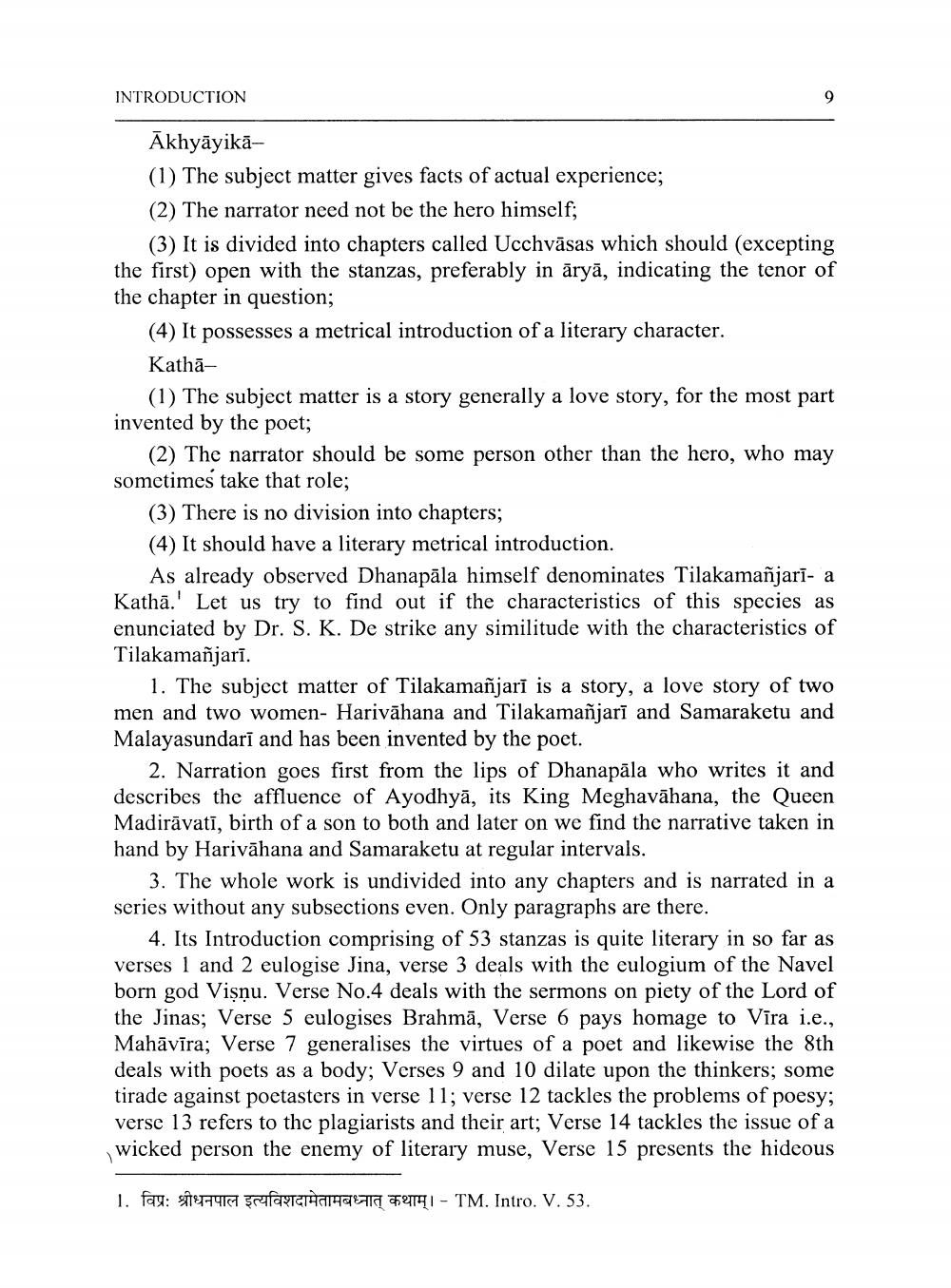________________
INTRODUCTION
Akhyāyikā(1) The subject matter gives facts of actual experience; (2) The narrator need not be the hero himself;
(3) It is divided into chapters called Ucchvāsas which should (excepting the first) open with the stanzas, preferably in āryā, indicating the tenor of the chapter in question;
(4) It possesses a metrical introduction of a literary character. Kathā
(1) The subject matter is a story generally a love story, for the most part invented by the poet;
(2) The narrator should be some person other than the hero, who may sometimes take that role;
(3) There is no division into chapters; (4) It should have a literary metrical introduction.
As already observed Dhanapāla himself denominates Tilakamañjarī- a Kathā.' Let us try to find out if the characteristics of this species as enunciated by Dr. S. K. De strike any similitude with the characteristics of Tilakamañjarī.
1. The subject matter of Tilakamañjari is a story, a love story of two men and two women- Harivāhana and Tilakamañjarī and Samaraketu and Malayasundarī and has been invented by the poet.
2. Narration goes first from the lips of Dhanapāla who writes it and describes the affluence of Ayodhyā, its King Meghavāhana, the Queen Madirāvatī, birth of a son to both and later on we find the narrative taken in hand by Harivāhana and Samaraketu at regular intervals.
3. The whole work is undivided into any chapters and is narrated in a series without any subsections even. Only paragraphs are there.
4. Its Introduction comprising of 53 stanzas is quite literary in so far as verses 1 and 2 eulogise Jina, verse 3 deals with the eulogium of the Navel born god Visnu. Verse No.4 deals with the sermons on piety of the Lord of the Jinas; Verse 5 eulogises Brahmā, Verse 6 pays homage to Vīra i.e., Mahāvīra; Verse 7 generalises the virtues of a poet and likewise the 8th deals with poets as a body; Verses 9 and 10 dilate upon the thinkers; some tirade against poetasters in verse 11; verse 12 tackles the problems of poesy; verse 13 refers to the plagiarists and their art; Verse 14 tackles the issue of a wicked person the enemy of literary muse, Verse 15 presents the hideous
1. fax: s
19167 ruftria4CET
7781141 - TM. Intro. V. 53.




